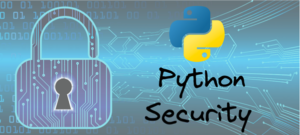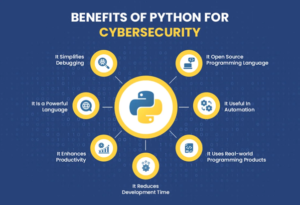Python language has grown in popularity over the years because of its ease of use and extensive ecosystem of libraries and frameworks. In this article, we dive into the significance of Python, its relevance in organizations, and the best ways to secure the software supply chain.
Why It Is Worth Learning Python
Python is an ideal choice for both beginners and expert developers. One of its primary advantages is its readability, as the language values clean and expressive code.
Python’s adaptability allows it to be used in a variety of disciplines, ranging from web development and data analysis to AI and ML. The broad standard library and third-party packages contribute to its ecosystem. This allows developers to save time by leveraging existing tools.
Another incentive to learn Python is the language’s strong community support. The Python community is supportive and eager to help beginners. The abundance of learning materials, tutorials, and documentation makes it easy for people to understand Python topics and enhance their abilities.
What is the Software Supply Chain?
The software supply chain encompasses the full process of creating, developing, distributing, and maintaining software programs. It is similar to the traditional industrial supply chain, except it deals with digital products and assets rather than physical things.
Key stages of the software supply chain
- Planning and design. The first step entails outlining the software project’s objectives and needs. During this phase, design decisions, architectural planning, and technological selections are made.
- Coding and development. The proper source code is written by developers, depending on the project specifications. This step is part of implementing algorithms, defining functions, and organizing the codebase.
- Software testing is an essential step in ensuring that the code operates as intended and satisfies the requirements. Unit testing, integration testing, system testing, and user acceptability testing are all included.
- Build and compilation. During this stage, the source code is compiled into executable binaries. This procedure is automated using build tools, ensuring the product is ready for distribution.
- Dependency management. External libraries and dependencies are frequently used in software. A critical part of the supply chain is managing these dependencies and guaranteeing compatibility. This entails specifying and regulating the versions of external software components.
- The generated code and related data are packed into distributable forms like installers, container images, or deployment artifacts. Packaging also entails the creation of program documentation and metadata.
- The program is made available to end users or other systems. Physical media, download links, and centralized software repositories are all examples of distribution mechanisms. For online applications, this may entail deploying the program to internet-accessible servers.
- The software is deployed and configured on target systems during the deployment phase. Rolling updates, blue-green deployments, and canary releases are examples of deployment methodologies.
- Monitoring and maintenance. Monitoring tools are used after the program has been deployed to track its performance, security, and usage. To resolve flaws or add new features, updates, and patches can be distributed, signaling the start of a new cycle in the software supply chain.
- End-of-life (EOL). A software product’s life cycle eventually comes to an end. This might be because of technology obsolescence, changes in business requirements, or the creation of a newer version. End-of-life phase management ensures a smooth transition for people and systems.
Why Should Enterprises Use Software Made in Python?
Python’s scalability, maintainability, and efficiency greatly benefit software development businesses. Python’s simplicity enables faster development, lowering software project time-to-market. Furthermore, developers can design various applications, from web-based solutions to data analytics tools.
Python’s interoperability with various languages and systems improves its integration possibilities. The language’s versatility across many platforms and operating systems guarantees that it can be used across a wide range of infrastructures.
Python’s ecosystem of libraries and frameworks offers businesses tools to solve business demands. This not only speeds up development but also assures the software solutions’ dependability and robustness.
Best Practices for a Reliable Python Software Supply Chain
To keep the Python software supply chain dependable and safe, developers should follow specific rules that promote code quality, security, and cooperation.
Code Quality
Maintaining a dependable software supply chain requires focusing on clean, modular, and well-documented code. Automated testing frameworks maintain codebase dependability by finding errors early in development.
Dependency Management
Managing dependencies is critical for preventing security flaws and ensuring interoperability across various components of a software project. Using tools like Poetry helps in the creation of isolated environments, the management of dependencies, and the generation of repeatable builds.
Version Control
Version control solutions are critical for monitoring changes, interacting with teams, and maintaining code integrity. Developers should follow best practices to improve cooperation and code integration, such as branching methods and commit procedures.
Continuous Integration/Continuous Deployment (CI/CD)
CI/CD pipelines automate the build, testing, and deployment processes, ensuring that changes are regularly verified and released. To set up sophisticated CI/CD workflows, use platforms like Jenkins or Travis CI.
Security Measures
To protect the Python software supply chain, dependencies must be updated regularly, security audits must be performed, and secure coding standards must be followed. Using tools such as Bandit for static analysis and safety for dependency vulnerability assessment improves the overall security posture.
Conclusion
Python’s scalability, efficiency, and collection of libraries help enterprises by enabling the development of adaptable software solutions. By learning Python, developers can contribute to the construction of high-quality software that fulfills the expectations of modern organizations while also ensuring a safe and efficient development process.


